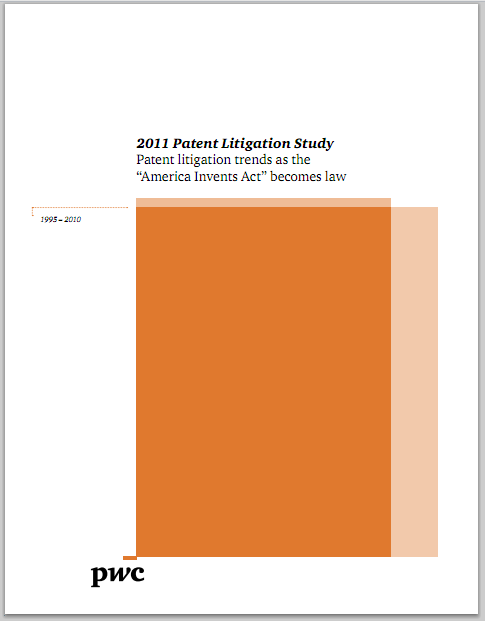Om te lezen
 Uit de samenvatting: 2011 has been a busy year in patent reform. More than a decade of discussion and debate over patent reform culminated on September 16, with President Obama signing the “America Invents Act” into law. While a few aspects of the bill were hotly debated within Congress, the bill ultimately passed both chambers with overwhelming support (304 to 117 in the House of Representatives and 89 to 9 in the Senate).
Uit de samenvatting: 2011 has been a busy year in patent reform. More than a decade of discussion and debate over patent reform culminated on September 16, with President Obama signing the “America Invents Act” into law. While a few aspects of the bill were hotly debated within Congress, the bill ultimately passed both chambers with overwhelming support (304 to 117 in the House of Representatives and 89 to 9 in the Senate).
The America Invents Act is not just another bill. It represents the most significant changes to the US patent system in nearly 60 years. Among them: the conversion to a firstinventor-to-file system that alters the current patent system’s approach to priority of inventorship and effective filing date. Specifically, it awards a patent to the first person to file a patent application on an invention with the US Patent and Trademark Office (“USPTO”), even if the filer was not the first to invent.
Significantly, the America Invents Act does not contain any language regarding the calculation of damages in patent infringement matters. This represents a shift from prior drafts, which incorporated substantial language addressing damages. The absence of any reform guidance in this area suggests that Congress believes the subject of patent damages is best left for the courts to address and regulate (or, perhaps, that it’s viewed as too contentious an issue to enable consensus).
The most recent example of a court decision that fundamentally changed how patent damages are calculated was issued by the US Court of Appeals for the Federal Circuit (“CAFC”) in early 2011. In Uniloc USA, Inc. v. Microsoft Corp. (Fed. Cir. 2011), the CAFC held that the widely used and recognized 25 percent rule 1 “is a fundamentally flawed tool for determining a baseline royalty rate in a hypothetical negotiation.” This ruling led industry observers to refer to the rule as officially ‘dead’ for purposes of establishing a hypothetical royalty rate in patent infringement cases. Despite the CAFC’s ruling, some parties engaging in patent licensing continue to reference the 25 percent rule in their royalty negotiations.
Additionally, the US Supreme Court recently issued rulings in two patent cases. It upheld the current “clear and convincing evidence” standard for invalidating a patent in Microsoft Corp. v. i4i Limited Partners (Supreme Court 2011), sustaining a roughly $300 million patent infringement verdict against Microsoft. Further, in Global-Tech Appliances, Inc. v. SEB SA (Supreme Court 2011), the Court held that “willful blindness” to the existence of a patent cannot serve as a defense to charges of inducing infringement.
In summary, while passage of patent reform legislation represents a significant change to the US patent system, the elimination of the 25 percent rule, as well as rulings in a variety of other recent court decisions, demonstrates that the courts will continue to shape the future of patent law and play the primary role in how patent damages are calculated
























































































